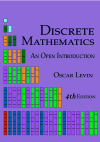Skip to main content
Contents Index Embed Dark Mode Prev Up Next \(\usepackage{cancel}
\def\d{\displaystyle}
\def\N{\mathbb N}
\def\B{\mathbf B}
\def\Z{\mathbb Z}
\def\Q{\mathbb Q}
\def\R{\mathbb R}
\def\C{\mathbb C}
\def\U{\mathcal U}
\def\x{\mathbf{x}}
\def\y{\mathbf{y}}
\def\X{\mathcal{X}}
\def\Y{\mathcal{Y}}
\def\pow{\mathcal P}
\def\inv{^{-1}}
\def\st{:}
\def\iff{\leftrightarrow}
\def\Iff{\Leftrightarrow}
\def\imp{\rightarrow}
\def\Imp{\Rightarrow}
\def\isom{\cong}
\def\bar{\overline}
\def\card#1{\left| #1 \right|}
\def\twoline#1#2{\begin{pmatrix}#1 \\ #2 \end{pmatrix}}
\def\mchoose#1#2{
\left.\mathchoice
{\left(\kern-0.48em\binom{#1}{#2}\kern-0.48em\right)}
{\big(\kern-0.30em\binom{\smash{#1}}{\smash{#2}}\kern-0.30em\big)}
{\left(\kern-0.30em\binom{\smash{#1}}{\smash{#2}}\kern-0.30em\right)}
{\left(\kern-0.30em\binom{\smash{#1}}{\smash{#2}}\kern-0.30em\right)}
\right.}
\def\o{\circ}
\newcommand{\lt}{<}
\newcommand{\gt}{>}
\newcommand{\amp}{&}
\definecolor{fillinmathshade}{gray}{0.9}
\newcommand{\fillinmath}[1]{\mathchoice{\colorbox{fillinmathshade}{$\displaystyle \phantom{\,#1\,}$}}{\colorbox{fillinmathshade}{$\textstyle \phantom{\,#1\,}$}}{\colorbox{fillinmathshade}{$\scriptstyle \phantom{\,#1\,}$}}{\colorbox{fillinmathshade}{$\scriptscriptstyle\phantom{\,#1\,}$}}}
\)
Chapter 4 Sequences
We have encountered
finite sequences already as a discrete structure and something we can count. In this chapter, we will consider possibly
infinite sequences of numbers. When the sequence itself is infinite, it no longer makes sense to ask how many possible sequences there are, but there is still an interesting connection to counting: Each term in the sequence can represent an answer to a counting question!

